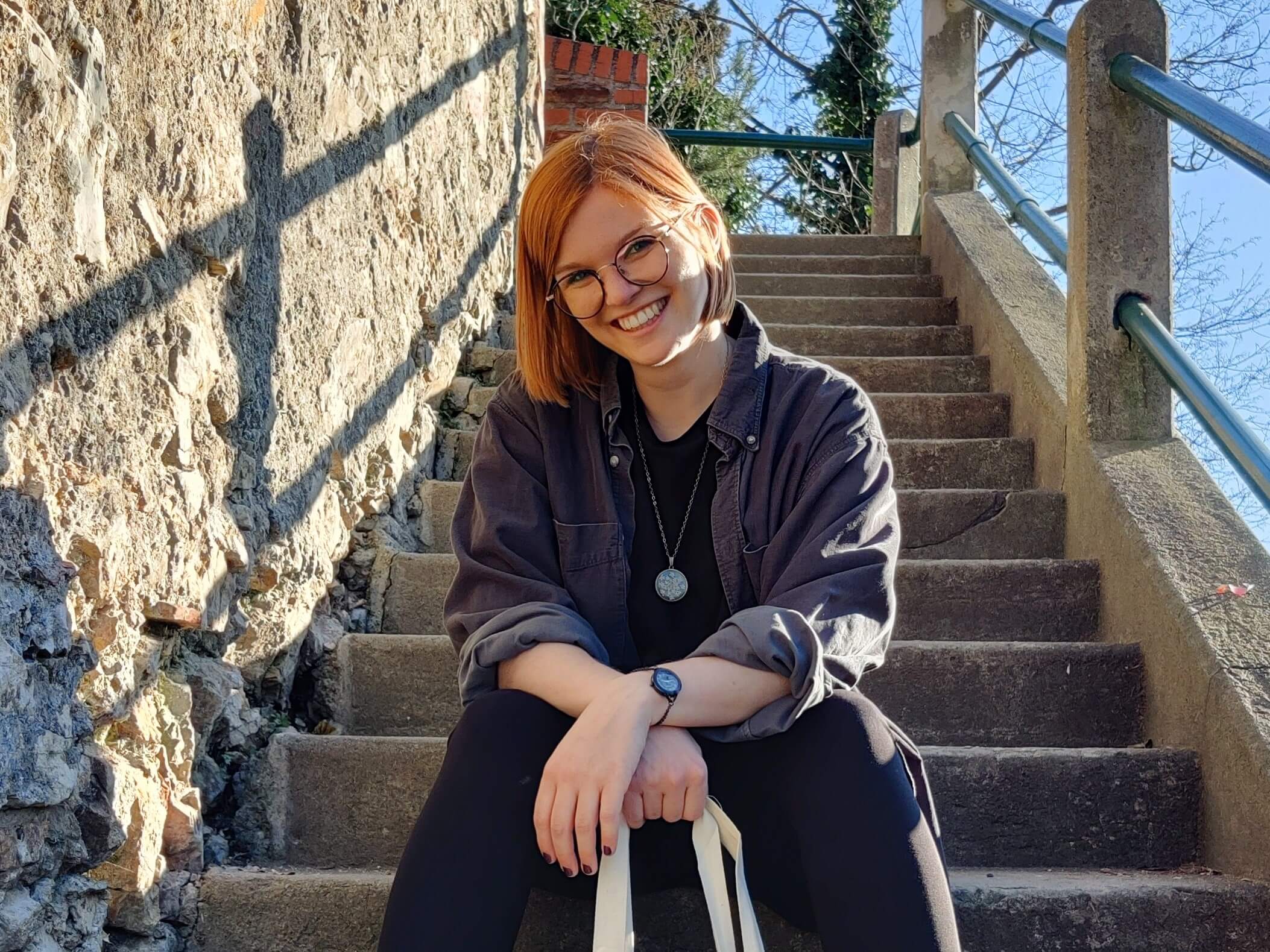Meet Tint Journal
Tint Journal is the first online literary journal with an explicit focus on writers who produce creative texts in English as their second or non-native language. Their mission is to create a platform for emerging and established ESL writers and encourage them to stand behind their non-native English backgrounds. Tint showcases original fiction and nonfiction creations by ESL writers including short prose, flash as well as poetry. We sat down with Tint’s Lisa Schanti to for a deep dive into the journal’s submission process. Peep our interview and be sure to check out the the journal and submit HERE!
How do you decide which poems to accept from the slush pile?
In total, we are three editors choosing the texts we publish. Matthew and I read all the prose texts, and John and I all the poems. John and I have quite opposite personal tastes in poems, so we are forced to view every poem from a close to objective angle with a focus on our background in literary studies, which is of course what we’d aim to do anyhow. Everyone of us picks their top texts before we meet for the evaluation. At a long long online meeting, we then discuss various aspects of the works that we rated best, such as form, voice, originality of the content, how form and content work together, and basics such as spelling and grammar. Since we are a journal publishing non-native English writing, we also care for the visualization of multilinguality in a poem, if this or a related topic are part of the poem’s overall idea. And we care for deviations from the English norm, if they are carefully and consciously carried out.
For every issue, there are too many poems that we would love to publish. So in a final round we try to balance the topics they cover as our issues are not themed, to create a well-rounded poetry section, too.
What are some fo Paws you’ve noticed for people that are submitting their work?
As we have to make sure that the writers we publish are non-native English speakers, i.e. they have acquired English after they were already fluent in another language, we have a title page request for submissions. The writers are asked to give their name, first language/mother tongue(s), second or foreign language(s), and nationality. We cannot accept submissions that do not provide a title page as we cannot manage asking every person who submits individually. It is very unpleasant to decline a submission just because it does not follow our guidelines. It might have been a wonderful addition to our next issue, but we will never know. So please ESL poets out there, read the guidelines!
Can you describe how you support your authors?
When we’ve accepted a text, our editing process follows. We care a lot for editing at Tint because we believe in the power of qualitative feedback. The experienced gaze of an editor on a text can certainly spot aspects that would remain concealed otherwise. Also, making sure that every deviation from the norm is a conscious choice is important for us at Tint. The writers who we’ve published so far enjoyed the conversations with our editors during the developmental and the copy editing phase very much.
At Tint, we also publish a bio of and a short Q&A with every writer and we ask them to record their texts so the audience can also listen to them reading. We believe that this adds another dimension to the reception of non-native English writing and makes their publication at Tint stand out a little.
After they have been published, we promote their work in our newsletter and on our social media channels. We also host readings twice a year where we invite writers from all around the world to read their work. In monthly writing meet-ups, they can also keep discussing their work with us and enjoy writing exercises. We also ask the published writers to share updates from their writing careers with us, such as book publications or events. Our mission is to make ESL (English as a Second Language) literature more visible for the English reading audience and critics, so it is also our wish to spread the word on many things associated with ESL literature.
Why do you think someone would want to publish your journal vs. a similar journal? What’s special about what you do with your journal and what makes it exciting for you?
I think publishing with Tint Journal is a conscious choice because it brings a writer’s linguistic background into the spotlight. It allows ESL writers to make a bold statement, saying, yes, English is not my first language, and yes, I am using and inhabitating this language environment for my creative voice, and yes, I have the right to do so. Standing behind your non-native background can be tough, in all languages, because you might be haunted by the idea that you will never sound as casual, as natural, as colloquial as native speakers. But that’s the wonderful thing about languages: They develop with their speakers. English is the world’s most spoken second language, and through the innovative, tinted lenses of ESL writers, we at Tint want to shine a light on the ways that authors all over the globe can contribute to a “global” English.
This is one of many reasons writers are invited to pick Tint. In fact, we are, as far as my research goes, the only literary journal explicitly dedicated to non-native English writing, so we might be the go-to-place for this group of writers.
Other than that, we care for good communication with our writers, their wishes always come first, also in the editing process, and their choices are always respected. It is our top priority to make them feel welcome and their words safe in our publishing environment. Without the writers, Tint would not exist, and we try to show our appreciation of ESL writing whenever and wherever we can.
What is one tip you have for people who want to submit to Tint Journal, but might feel nervous?
If in doubt, contact us! We’d rather dive into a conversation with you via email or social media than discover submissions in our inbox that do not meet our guidelines.
So after I submit a poem to your journal, what happens on the backend? What happens to my work after I press submit?
So here’s Tint’s issue process in a nutshell. I am focusing on the issue here, and do not include other activities such as readings, writing meet-ups, association activities, and more.
The release of the next call for submissions is the first step in our active issue production (some fundraising has to be conducted before that, too). We post our call on social media, in our bi-weekly newsletter, share it with universities, media outlets, and so on. We also spend some money on placing it in prominent magazines.
For the submission process, we do no longer use Submittable as we cannot afford their fees. So we sort and categorize all texts as they hit our inbox. They lie dormant until the end of an open call, and then Matt, John and I read – a lot. After we’ve decided on the pieces for publication, the writers receive their contracts, a request for a bio and the questions for the Q&A. We also conduct extra fundraising according to the backgrounds of the to-be-published writers. Our art editor Bianca then goes through the art submissions and pairs each text with an artwork. The artists also receive contracts.
At this stage of our magazine’s life, we can neither pay the writers nor the artists, but we are working towards this goal as we definitely think that creative minds should be paid for their work. I’ve already shared some insight into the editing process earlier, so I will not repeat myself here. But to add some figures, Tint has had nine volunteering editors for the past issue who worked with the individual submissions. We make sure to distribute the pieces according to the editors’ workload capacity, so that every text is cared for as much as possible. After the first stage of developmental editing, the writers are asked to review their text, and then after a second stage of copy editing, they are asked to hand in their desired final version.
When the day for publication comes close and all final versions of the texts have been found, our web developer Manfred prepares the new issue category on our website. Then, I create a profile for every writer, upload their text (caring for the correct formatting of course) and the respective artwork. On the day of the release, we send out press texts and extra newsletters to Tint’s associates. In the following half year, we regularly post on Instagram, Facebook and Twitter and share our writers’ work in our newsletters.
Hope that you had some fun learning about Tint Journal! Now, it’s time to get to submitting! Don’t forget to submit your work out here and check Tint Journal out on Twitter, Facebook and Instagram!

About Lisa Schantl
Lisa Schantl is the founder and editor-in-chief of Tint Journal and project assistant at the Institute for Art in Public Space Styria. She holds a Master’s degree in English and American Studies with a focus on (North American) literature and the environment, as well as Bachelor degrees in that same field and Philosophy. In addition to her research in literature written in English, she is very interested in international relations and uses each opportunity to engage in intercultural exchanges, such as the LARB Publishing Workshop or the European Forum Alpbach. Her journalistic and critical work has appeared in Versopolis, Anzeiger, PARADOX, The Montclarion and more, her creative work in UniVerse, Artists & Climate Change, The Normal Review, PubLab and more, and her first literary translation has just been published in Asymptote’s 2021 anniversary issue.





Comments (0)